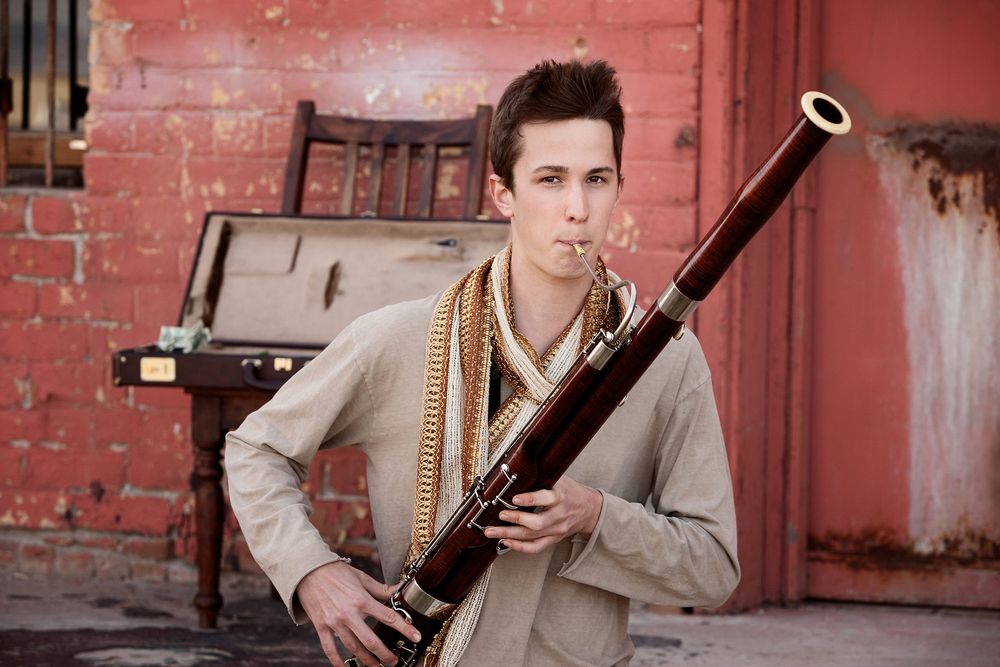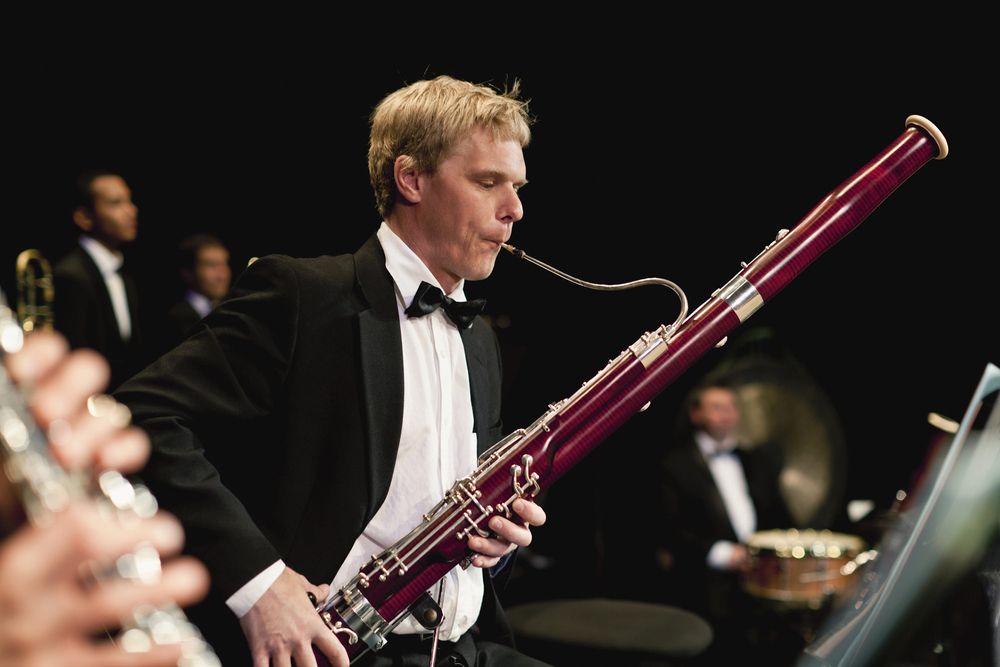9. The Bassoon and Its Sound
Now, we get to the point that makes the bassoon, besides its appearance, so special... its sound and tone. But the uniqueness of the bassoon relies on reciprocity. It's the players who coax that resonant, warm tone out of the bassoon that make the instrument extraordinary, and in turn, the bassoon imparts this uniqueness back to its players. Yes, bassoonists are still somewhat "exotic" even today, and the tone of a bassoon often elicits a cheerful smile from most listeners. But let's talk about the tone, the timbre of the bassoon:
The sound of this instrument strongly resembles our vocalization of "O." Yet, not all bassoon tones are the same! Some players prefer a round, warm tone, while others lean toward a brighter, slightly nasal one. It's not uncommon that when filling a bassoon position in a symphony orchestra, the decisive factor can be the tone produced - because a "bright" player might not fit into a "dark" group, or vice versa.
The timbre of the bassoon is quite flexible and changes across octaves more than in other wind instruments.
In the low range (around contrabass B to small F), at fortissimo, the bassoon produces a raw, woody sound that distinctly reveals the vibrations of the reed. This sound is often demanded in large romantic symphonies. Playing the low notes in pianissimo creates a silky "hum," capable of playing subtle bass lines or conveying a somewhat threatening scene. However, this tonal range is never murky or blurry; it retains its clear presence at any volume.
In the mid-range (around small F to C-1), the bassoon develops its resonant sound, akin to our vocal "O." In this range, it presents the generally recognized "typical" bassoon sound, suitable for expressive melancholic solos, rhythmically engaging, and even humorous (staccato) passages. This tonal quality, particularly in orchestral settings, rounds off bass lines (double bass, cello unison). The resonant bassoon tone adds a sort of "icing" to the somewhat austere-sounding lower strings, making them softer and more transparent. During staccato/pizzicato passages of the same instrumental group, the bassoon gives the short notes a clear presence.
In the high range (around C-1 to C-2), the bassoon alters its typical, somewhat buzzing tone. The sound becomes slightly leaner and sharper, advantageous especially in solo passages. One might say the high range of the bassoon transitions to an "English Horn" or a deep "Oboe." While the bassoon hasn't found a secure place in popular music ("U-Musik"), it's truly a "wild card" in the symphony orchestra. Its resonant sound blends with other instrumental groups like almost no other instrument. Due to its more baritone tonality, it always contributes an unobtrusive "full sound," with an unmistakable timbre.
Conclusion: Thanks to its pitch and tonal quality, the bassoon finds its place from solo instrument to basso continuo.
In a woodwind section, the bassoon is the lowest instrument - this means in a double setup, the 1st bassoon handles the mid to high, and the 2nd bassoon manages the low to mid-range.



